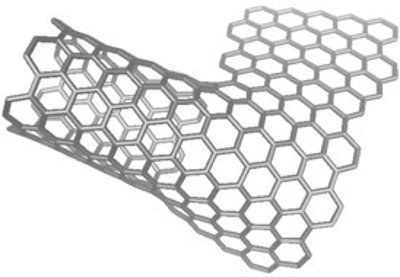Researchers from Rice University developed a method to create a hybrid graphene-nanotube material that promises to have a better electrical and mechanical qualities than both materials. They call this new material "rebar graphene" because it resembles the way a rebar is used in concrete.

The researchers say that the resulting material contains large, flexible and conductive transparent sheets of graphene that are much easier to manipulate than pure graphene. A few layers of this new material could prove to be a cost-effective ITO alternative for displays and solar cells.
The researchers explain that this technology takes away the polymer support step in usual CVD graphene production - which grows the graphene on a metal and then coats it with polymer if you want to remove the metal. In the normal process, removing the polymer is the final step (if you want just the graphene) - but this step is problematic because it makes impurities in the graphene.
The process itself is simple - it starts with spin-coating graphene nanotubes on copper foils, which is then heated and cooled. The heat causes the carbon groups to decompose and form graphene. The nanotubes partially split to form covalent junctions with the graphene layer. The nanotubes are "embedded" in the graphene (see image above) - and this actually makes the material stronger and more conductive than standard CVD graphene which contains grain boundaries (it is not a perfect graphene). The nanotubes in rebar graphene actually bridge the grain boundaries.